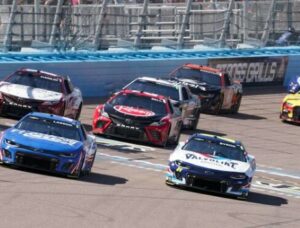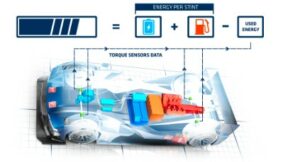
Motorsports has long been associated with the roar of engines and the smell of burning fuel, but in recent years, there has been a growing push towards sustainability and environmental responsibility within the industry. As concerns about climate change and air pollution continue to mount, motorsports organizations and manufacturers are exploring cleaner, more eco-friendly alternatives to traditional gasoline-powered vehicles. In this comprehensive guide, we’ll explore the rise of clean gas in motorsports, its benefits, challenges, and the potential impact on the future of racing.

The Evolution of Clean Gas
Clean gas, also known as alternative fuels or renewable fuels, refers to non-traditional sources of energy that produce fewer emissions and have a lower environmental impact than conventional gasoline.
Types of Clean Gas
There are several types of clean gas being explored for use in motorsports, including:
- Biofuels: Derived from organic materials such as plant matter or animal waste, biofuels offer a renewable alternative to fossil fuels and can help reduce greenhouse gas emissions.
- Hydrogen: Hydrogen fuel cells produce electricity through a chemical reaction between hydrogen and oxygen, emitting only water vapor as a byproduct.
- Electricity: Electric vehicles powered by batteries or fuel cells offer a zero-emission alternative to internal combustion engines, with the potential to significantly reduce air pollution and dependence on fossil fuels.
Benefits of Clean Gas in Motorsports
The adoption of clean gas in motorsports offers numerous benefits for both the industry and the environment.
Environmental Impact
One of the primary drivers behind the shift towards clean gas in motorsports is the desire to reduce the environmental impact of racing activities. By using renewable fuels and alternative energy sources, motorsports organizations can significantly decrease their carbon footprint and minimize air and water pollution associated with traditional gasoline-powered vehicles.
Technological Innovation
The transition to clean gas fuels has sparked a wave of technological innovation within the motorsports industry. Manufacturers are investing in research and development to improve the efficiency, performance, and reliability of alternative fuel systems, leading to advancements in engine design, energy storage, and powertrain technology.
Market Relevance
As consumer demand for eco-friendly products and sustainable practices continues to grow, clean gas fuels offer motorsports organizations and manufacturers a competitive edge in the market. By aligning with broader trends towards environmental sustainability, racing teams and automakers can attract environmentally conscious sponsors, partners, and fans, while positioning themselves as leaders in the transition to a low-carbon economy.
Challenges and Considerations
While the adoption of clean gas in motorsports holds great promise, it also presents several challenges and considerations that must be addressed.
Infrastructure
One of the main obstacles to the widespread adoption of clean gas fuels is the lack of infrastructure to support their use. Unlike gasoline, which is readily available at gas stations around the world, biofuels, hydrogen, and electric charging stations are still relatively scarce, making it difficult for racing teams to refuel or recharge their vehicles during competitions.
Performance and Reliability
Another challenge facing clean gas fuels in motorsports is performance and reliability. While alternative fuels have made significant strides in recent years, they still lag behind gasoline in terms of energy density, power output, and range. Racing teams and manufacturers must overcome these technical limitations to ensure that clean gas-powered vehicles can compete on equal footing with their gasoline-powered counterparts.
Cost
The initial cost of transitioning to clean gas fuels can be prohibitive for racing teams and manufacturers, particularly smaller operations with limited budgets. While the long-term savings from reduced fuel consumption and lower emissions may outweigh the upfront investment, many teams may struggle to justify the expense in the short term.
Clean Gas in Action: The Thunderbird Speedway
The Thunderbird Speedway, located in Oklahoma, has been at the forefront of the clean gas movement in motorsports. In recent years, the Speedway has implemented a series of sustainability initiatives. All aimed at reducing its environmental impact and promoting clean energy technologies.
Biofuel Blends
One of the key initiatives at the Thunderbird Speedway is the use of biofuel blends in race cars. Blending traditional gasoline with ethanol or biodiesel derived from renewable sources. This way, the Speedway has been able to reduce emissions and promote the use of sustainable fuels in racing.
Solar Power
In addition to biofuels, the Thunderbird Speedway has invested in solar power to meet its energy needs. Solar panels installed throughout the facility harness the power of the sun to generate electricity. Thus reducing reliance on fossil fuels and lowering operating costs.
Community Outreach
The Thunderbird Speedway is also actively engaged in community outreach and education efforts. These are meant to raise awareness about the benefits of clean gas in motorsports. Through partnerships with local schools, environmental organizations, and government agencies. The Speedway is helping to inspire the next generation of racing fans and environmental stewards.
The Future of Clean Gas in Motorsports
As the motorsports industry continues to embrace clean gas fuels, the future looks bright for sustainable racing.
Innovation and Collaboration
Manufacturers, racing teams, and industry stakeholders are collaborating. They are working to develop innovative solutions to the technical, logistical, and financial challenges associated with clean fuels. By sharing knowledge, resources, and best practices. The industry is driving forward progress towards a more sustainable and environmentally responsible future.
Policy Support
Government policies and regulations play a crucial role in shaping the adoption of clean gas fuels in motorsports. Incentives such as tax credits, grants, and subsidies can help offset the costs of transitioning to alternative fuels. Regulations mandating emissions reductions and promoting renewable energy. These can encourage investment in clean gas technologies.
Continued Growth and Expansion
As clean gas technologies mature and become more widespread, we can expect to see continued growth and expansion in the use of alternative fuels in motorsports. From biofuel-powered race cars to hydrogen fuel cell prototypes, the possibilities for clean, sustainable racing are endless.
Conclusion: Racing Towards a Greener Future
Clean gas fuels are revolutionizing the motorsports industry, offering a path towards a greener, more sustainable future for racing. By embracing alternative fuels and renewable energy sources, racing teams, manufacturers, and fans can enjoy the thrill of competition. All while minimizing their environmental impact and contributing to a cleaner, healthier planet.
From biofuels and hydrogen to electric powertrains, the era of clean gas in motorsports is dawning. Effectively promising a new chapter of innovation, excitement, and sustainability on and off the track. The Thunderbird Speedway and other racing venues lead the charge towards a greener future. The rest of the motorsports world is sure to follow, accelerating towards a cleaner, more sustainable tomorrow.







